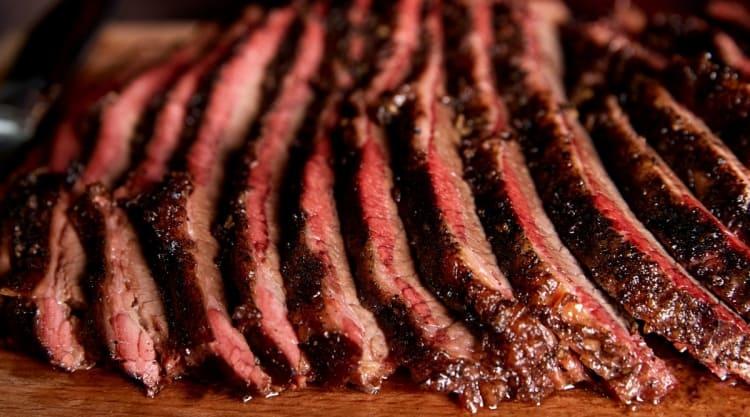
Where do you think the best barbecue in the world is cooked? If you guessed Texas you’d be right, but do you know the exact restaurant that is widely considered to be number one?
You are watching: Aaron Franklin Brisket Recipe — Step-by-Step With Videos to Follow
The answer may surprise you!
Franklin Barbecue of Austin, TX is considered by many to be the best BBQ you will ever find.
What makes it surprising is that Pitmaster Aaron Franklin opened his restaurant in a trailer on the side of Interstate 35 in 2009. He quickly gained a cult following, and the rest is history.
That’s right, the best BBQ restaurant in the world has been around less than a decade, and is owned by a man not yet 40.
And what is this world-famous pitmaster most known for? The Aaron Franklin brisket recipe, salt and pepper rubbed, wrapped in pink butcher. And in this article, we’re going to showcase this recipe, with simple to follow instructions, so you can recreate it at home.
History
While many of the great Texas barbecue establishments are family operations where they’ve been doing things the same way for decades, Franklin’s is a little different.
It is true that Aaron’s parents had briefly owned a barbecue restaurant when he was a child, and he’d worked for a brief period of time for John Mueller, grandson of the famous Louie Muller, patriarch of Louie Mueller Barbecue in Taylor, TX; but Aaron would be the first to point out he didn’t learn how to cook beef brisket by cutting onions and running a register.
Humble Beginnings
As already stated, Franklin Barbecue had incredibly humble beginnings. He and his wife Stacy initially opened the restaurant in a parking lot in Austin and ran it from a series of trailers.
One trailer held a smoker that had originally belonged to John Mueller, his former employer, and the second trailer was a 1960s travel trailer converted into a kitchen. It was here that the meat and sides were prepped and sold.
Right from the beginning, Aaron put a focus on creating a second to none product. He didn’t cut corners, and he used premium ingredients. As people began to taste his food, word quickly spread that his food was second to none, and he quickly gained a cult following.
Eventually, people started lining up outside the fence (since they were in a parking lot, they had to fence themselves in to keep things orderly) long before they opened. They’ve sold out of food every day since they’ve opened.
Expansion
As time went on, more and more people took notice of Franklin Barbecue and reviews began to come in fast and furious.
First social media and local Austin websites and blogs raved about the barbecue, then BonAppetit named it the best barbecue in the country, and not long after Texas Monthly magazine named it the best in Texas — which is pretty much also to say it is the best in the country.
In less than two years, Franklin’s had outgrown their small operation and began looking for a permanent location they could call home. When another BBQ restaurant closed not far from their existing parking lot setup, Aaron and Stacy jumped on the opportunity.
In their new location, they were able to up their capacity by adding more smokers. They eventually began taking pre-orders, so impatient patrons could skip the line altogether — with a minimum order of $100.
Yet, success caught up with them again. In 2014, they built an addition to their existing restaurant to house their smokers (up until then, the smokers were behind the restaurant), and they also added two new smokers — one a large rotisserie named Bethesda. This allowed them to increase their capacity and also make the cooking process a little easier for themselves.
James Beard Award, PBS, Book Deal
Since then, Franklin has continued to collect accomplishments not many classically trained chefs will see in a lifetime of professional cooking, let alone someone who went from hobbyist to professional.
In May 2015, he was nominated and awarded the prestigious James Beard Award for Best Chef: Southwest. He is the only barbecue restaurateur to be nominated for the award, let alone win.
After creating a series of web videos (more on that later) in 2013, PBS produced a 10 episode series titled “BBQ with Franklin.” Each half-hour episode followed Aaron around Texas, soaking up the different regional grilling cultures that make up Texas Barbecue.
Finally, Aaron penned his book “Franklin Barbecue: A Meat Smoking Manifesto,” an elaborate cookbook of sorts. In it, he gives his story of how he got to be where he is, as well as describe how to build pits like he uses in his restaurant, and how to cook his meats and create his signature sauces and sides.
So, just to recap: In less than 6-years, Aaron Franklin opened his restaurant in a parking lot, moved to a brick and mortar location, had to build an addition onto said brick and mortar, won a James Beard Award, wrote a cookbook, and oh yeah, starred in his own TV show.
The Brisket
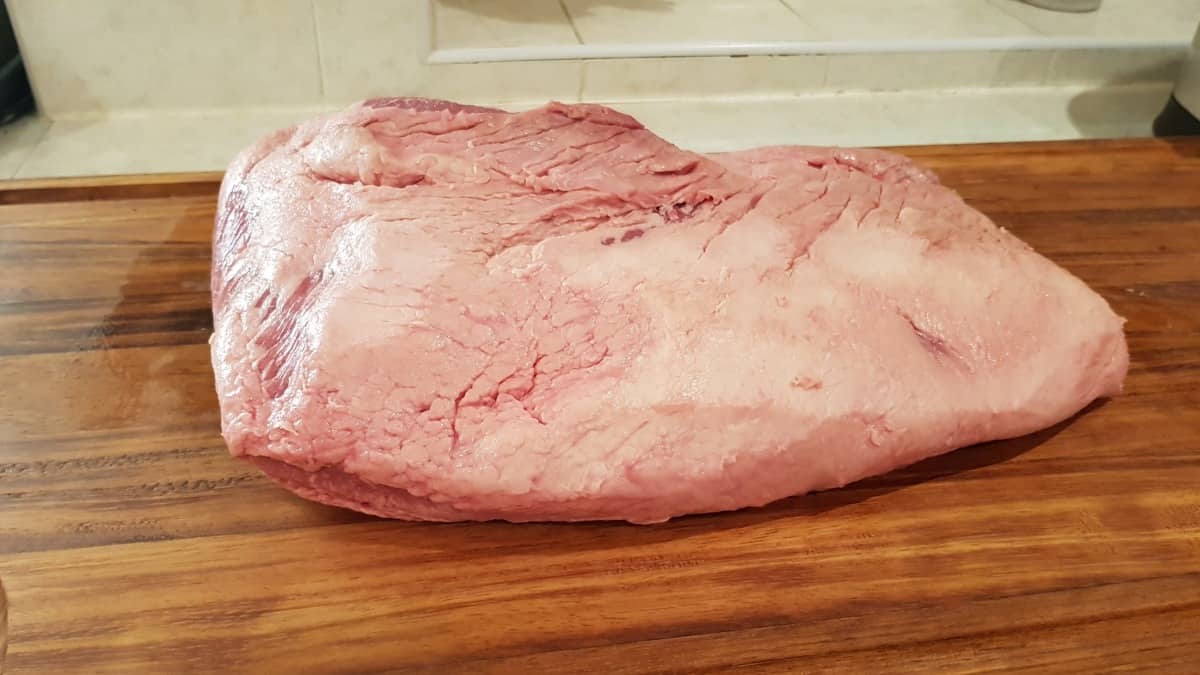
Read more : DIY Cat Stain & Odor Remover That Actually Works
What undoubtedly bring most patrons to Franklin Barbecue, is the promise of low n slow smoked brisket unlike they’ve ever had before.
In central Texas (where Austin is located), people traditionally like their barbecue cooked a certain way, and Aaron doesn’t stray from that.
They like their food to be cooked with Post Oak wood, and they love their salt & pepper. Below is a quick run-down of how Aaron cooks his brisket in his restaurant.
Finest Ingredients
Earlier I mentioned that Aaron did one thing from day one: his focus was on a second to none product, and he didn’t cut any corners. This meant using the highest quality ingredients he could find.
While most barbecue joints are cooking choice briskets (some might even be using select), in a recent interview with Thrillist Aaron explained he uses hormone free Prime grade beef. This is beef from cows that have not been pumped full of hormones and with the highest quality of marbling available.
For seasoning, simple salt and pepper are fine, although Aaron uses 16-mesh coarse grain pepper. Other than that, no fancy fixings are required.
For smoke flavor, traditional Central Texas BBQ uses Post Oak burned in an offset smoker. Franklin Barbecue is no exception, but Aaron does recommend against using green wood, or wood that hasn’t been properly dried first.
Hardware
While many restaurants claim to serve barbecue from genuine smokers, many of them are producing half-hearted excuses for smokers using gas or electric ovens with smoke boxes attached to them. Franklin uses traditional offset smokers, built from things like old propane tanks.
They operate very simply: there is a firebox to one side and as the fire burns the attached chamber heats up cooking the meat, and smoke passes through the chamber flavoring the meat.
On top of using an offset smoker, Aaron adds a pan of water to his cook chamber. This helps add moisture and humidity to inside your cooker. A moist and humid-cooking environment will both prevent food from drying out and assist in smoke penetrating into the meat to give you a good flavor.
Patience
The last step for any brisket cook is patience.
A brisket is a large cut of meat and will take a long time to cook. Aaron suggests that when cooking at a temperature of 250 °F, a brisket will typically need an hour to an hour and a quarter per-pound. That is potentially a 12 to 15-hour cook right there.
Pink Butcher Paper
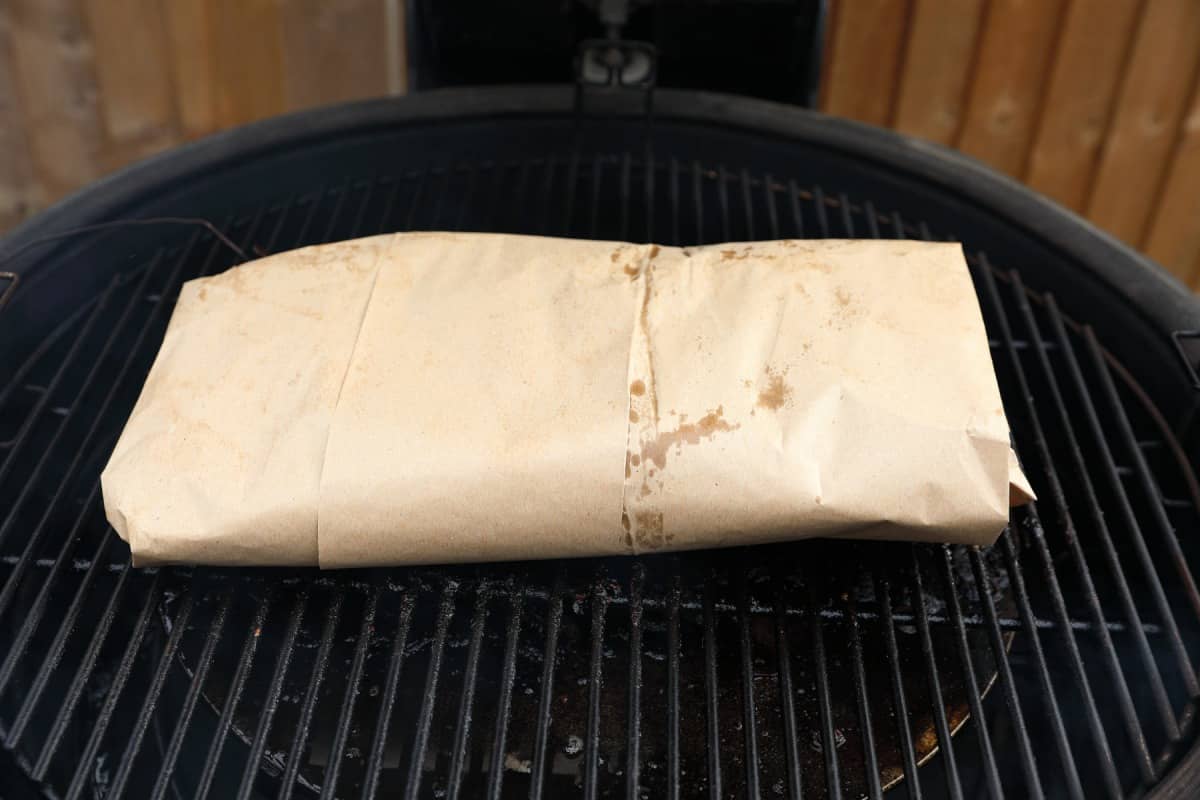
To help speed up the process, Aaron wraps his brisket in pink butcher paper (not foil) once it has reached the desired color, and places the meat back on the cooker.
As explained by Hardcore Carnivore Jess Pryles, Aaron learned this technique from his time working with John Mueller. John learned it from his dad, Bobby Mueller.
This paper is food grade and is beneficial in barbecue because it keeps the meat from drying out during the last stages of the cook, without potentially ruining the bark you’ve just spent hours forming such as happens when wrapping in foil.
How to Cook the Aaron Franklin Brisket Recipe at Home
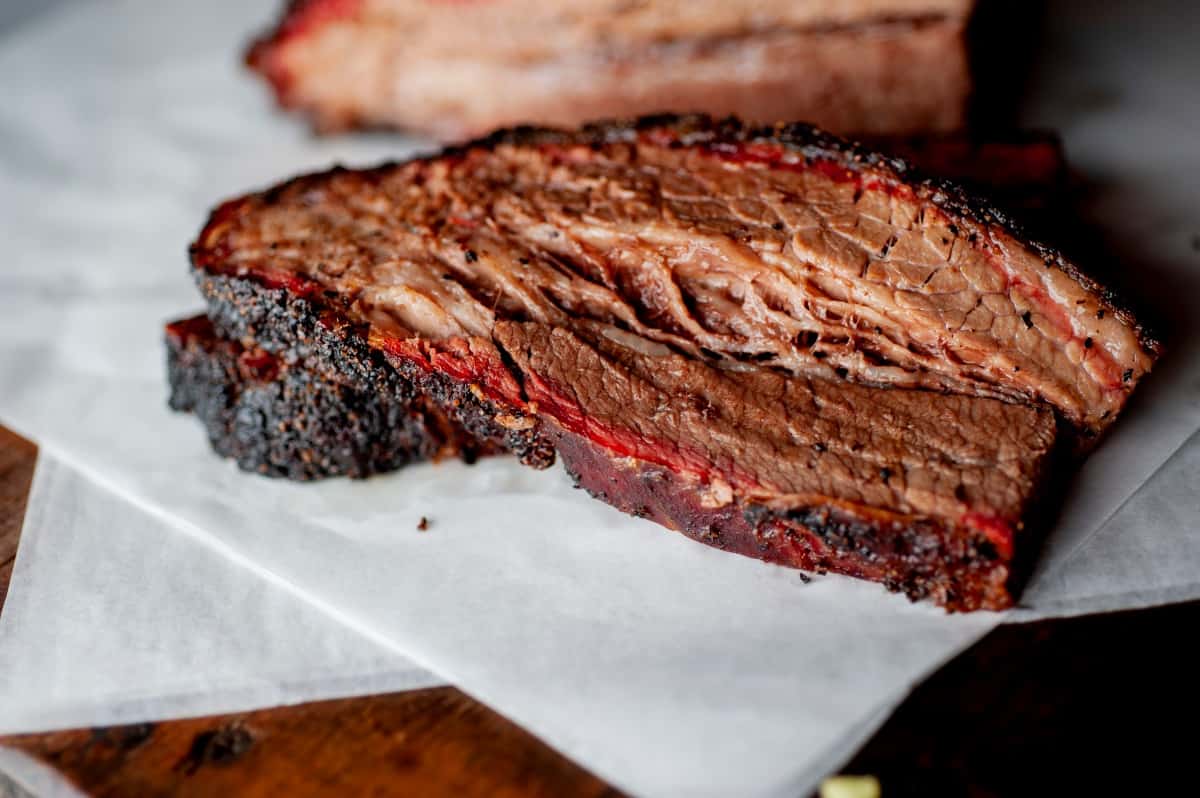
If you’ve read this far, I wouldn’t be surprised if you wanted to try and make a brisket yourself, and use as many of Aaron’s techniques as possible.
While it will likely take a lot of practice, you can make a pretty dang good brisket in your own backyard, by using most of the tools and techniques found in Aaron Franklin’s brisket recipe
Tools
For starters, you’re going to need the right tools to do the job. While you have many choices of cookers to use, if you want to come as close as possible to following Aaron’s methods, you’re going to want an offset smoker. You don’t need a $10,000 rig or anything; a simple Oklahoma Joe can be had for a couple of hundred bucks.
If for some reason you’re unable to use an offset smoker, you can easily use any charcoal grill that allows you to set up for two-zone indirect cooking. Which means almost any grill will work, from the iconic Weber Kettle, to bullet style smokers, to kamados like Big Green Egg/Kamado Joe.
Lastly, you’re going to either need post oak or oak logs or chunks. If you’re using an offset smoker, logs will be your preferred wood, if using a charcoal grill, chunks will be what you need. You should use oak if you want to stay true to Aaron’s recipe, though if you want to go slightly off-piste, you can use alternatives as discussed in our article on the best wood for smoking brisket.
Ingredients
As mentioned, Franklin uses Prime briskets, which are very expensive and are certainly not affordable for everyone. If you can’t find Prime, at the very least you should use ‘Choice’.
For seasoning, it’s easy to copy the traditional half-and-half kosher salt/16 mesh ground pepper rub. Simply combine a couple of tablespoons of each into a shaker and put on the brisket. You don’t want to go too heavy here, else you might over season. Just focus on giving the brisket an even coat. But you can also choose any other brisket rub of your liking.
In Aaron’s brisket recipe, there is — in addition to adding a water pan to the cooker -mention of spritzing your brisket with a liquid to help keep the meat moist. Any liquid can be used to make a spritz, but he recommends using apple juice and water.
Trim the Brisket
Read more : Does Brushing Your Teeth With Baking Soda Whiten Your Teeth?
If you watch a lot of YouTube video’s on barbecue, you’ll see an awful lot of professionals simply over trimming cuts like brisket. That’s why it’s refreshing to see Aaron put out a video with a simpler approach to trimming.
In short, you’re going to trim the fat cap down to ¼” thickness and remove any larger pieces of fat, since they will simply not cook down.
In particular, you’re going to want to pay special attention to large pieces of hard fat that connect the point to the flat, because they will never cook down. For a bit more detail on how to trim like Franklin, watch the above YouTube video, or check out our guide on how to trim brisket.
The Cook
Once you’ve lit your fire and added your meat, it’s time to sit back, grab a book, and make the most of your day. The brisket is going to take the better part of the day to cook, so you can’t make plans to head out and run errands. Depending on your cooker, you might want to cook your brisket fat side up or down, read that article to get the best advice. But the summary is: Most grills fat side down, offset smoker fat side up.
Every hour or so, you’re going to want to check your fire, make sure you don’t need to add another log or charcoal, and also take the opportunity to spritz your meat.
In the videos Aaron does not make mention of internal temps of the meat very often. Since he cooks the same type of briskets day in, day out, he can tell when they are progressing and when it is time to wrap the briskets, just by feel. It won’t be as easy for you.
A general rule of thumb is to insert a food thermometer, and when the internal temp reaches 165 °F, it’s time to wrap it.
As discussed, Aaron uses butcher paper to wrap his brisket, and you can too, or you could wrap it in tinfoil if that’s all you have. The purpose of the paper is to help the brisket braise in its own liquid and speed up the final steps of the cooking process, pushing the brisket through the stall and beyond, until the final desired internal temp.
Once your brisket has reached an internal temperature of approximately 200 °F – 205 °F, you’re going to want to check for tenderness. If a digital thermometer probe can slide in and out like butter, you’re golden.
Faux Cambro — Or a Real One
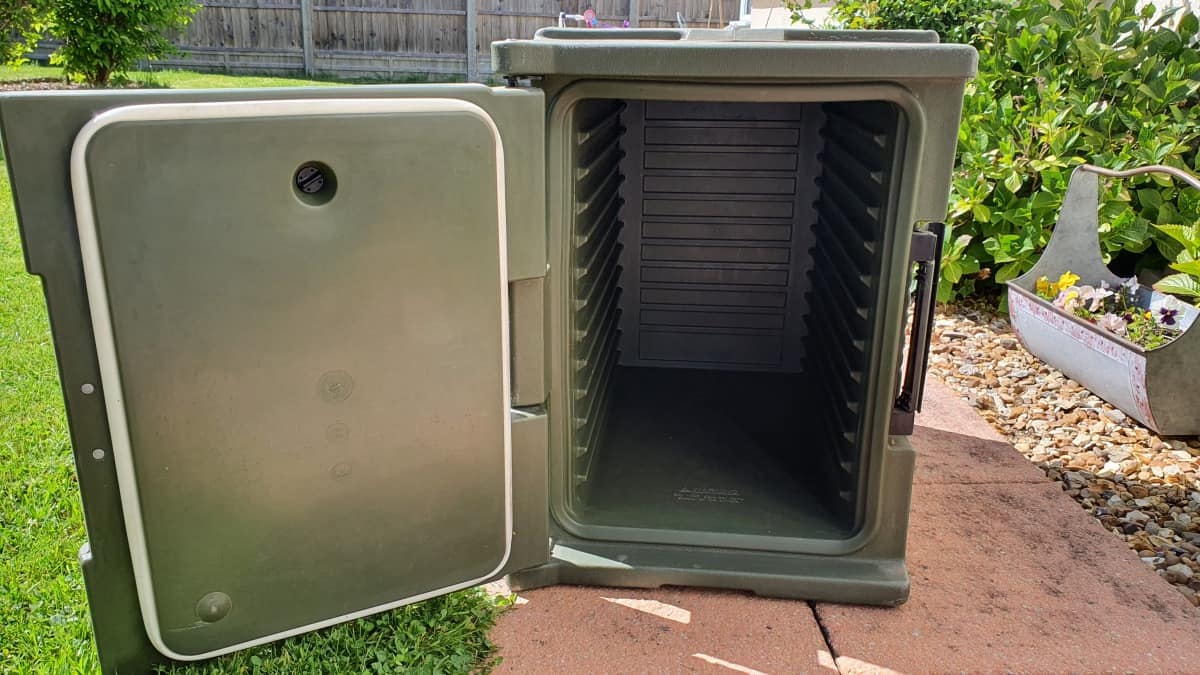
A Cambro is a brand name of food warmer, frequently used by caterers to transport food and keep it hot. Unfortunately, a Cambro can be very expensive, but there is a cheap alternative (a faux Cambro so to speak)- a dry cooler.
Once you’ve removed your (still wrapped) brisket from your cooker, you’re going to want to place your meat into a cooler for a rest.
This time resting will allow for the liquid inside the brisket to come down in temp and not come running out of your brisket when you slice it.
Carving
Aaron does an excellent job describing how to properly slice a brisket in the last video. He starts by reminding you of the two cuts in a brisket, the flat and the point, which is discussed in great detail in our article on brisket flat vs point. From there he explains that you’re going to want to slice both cuts against the grain.
Starting from the flat, Aaron slices brisket roughly as thick as a pencil.
When sliced the brisket is able to hold itself under its own weight, but when lightly tugged can easily be pulled apart. Aaron also explains that he keeps the brisket together as he is slicing to keep the slices from losing moisture, oxidizing, and drying out.
Once he gets to the point of the brisket, Aaron turns the meat 90° to continue slicing against the grain. He also slices it a little thicker than the flat, about 3/8”.
Leftovers
A whole packer brisket is a huge chunk of meat, and unless you are feeding a large crowd, there are bound to be leftovers.
The problem with leftover brisket is that it dries out quickly and is typically made worse during reheating.
But fear not, check out our article on how to reheat brisket to achieve results comparable to the day it was cooked.
Conclusion
Well, there you have it. The incredible history of Aaron Franklin, Franklin Barbecue, and his brisket.
Do you think we left any major parts out? Have you ever cooked a brisket before using his methods? Have you ever cooked a brisket before and thought your methods were better than his?
Make sure to tell us in the comments section below!
Happy grilling!
Source: https://gardencourte.com
Categories: Recipe

